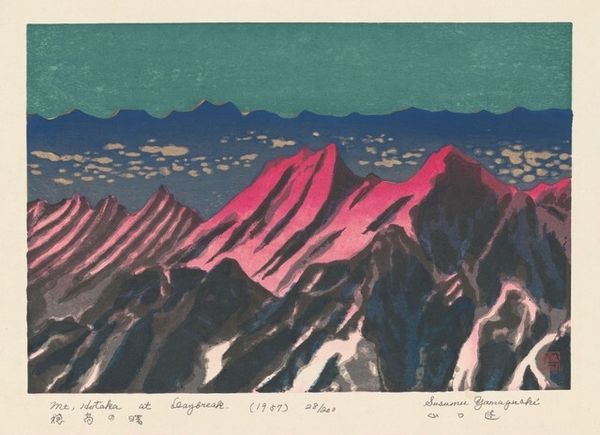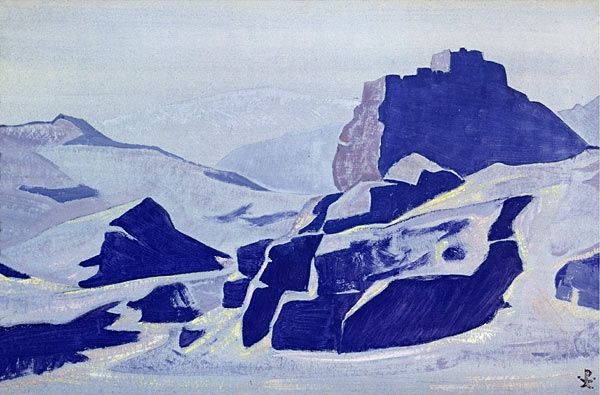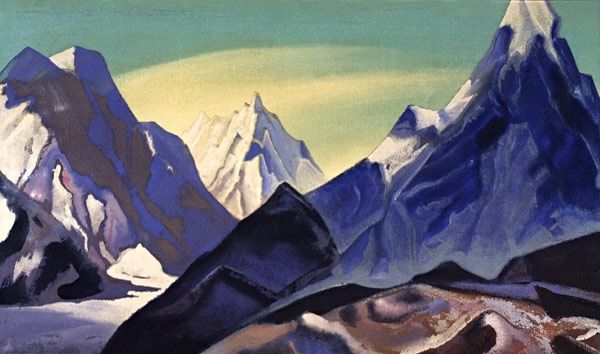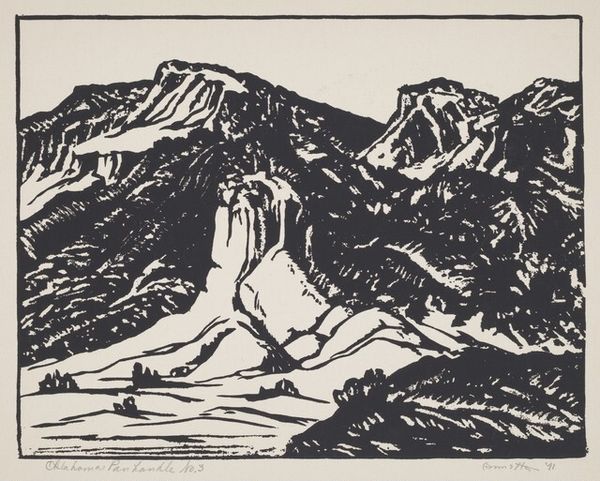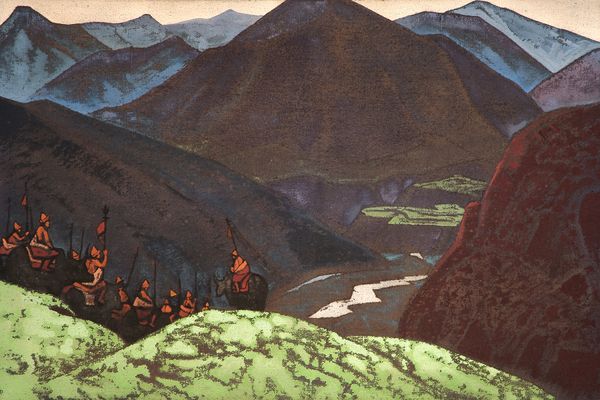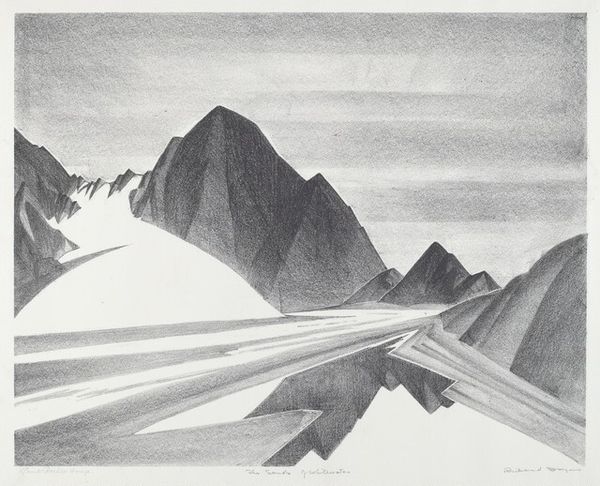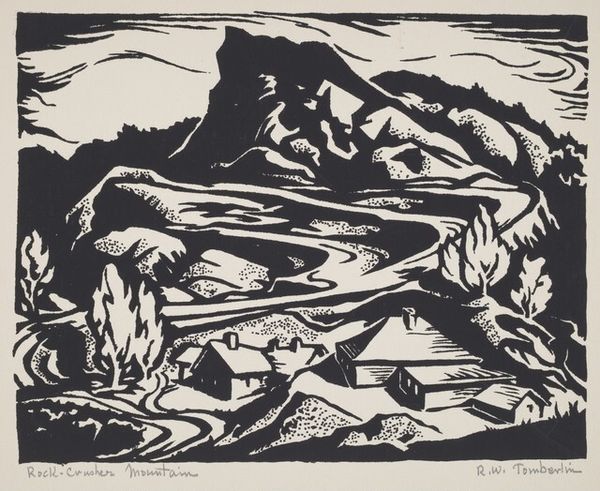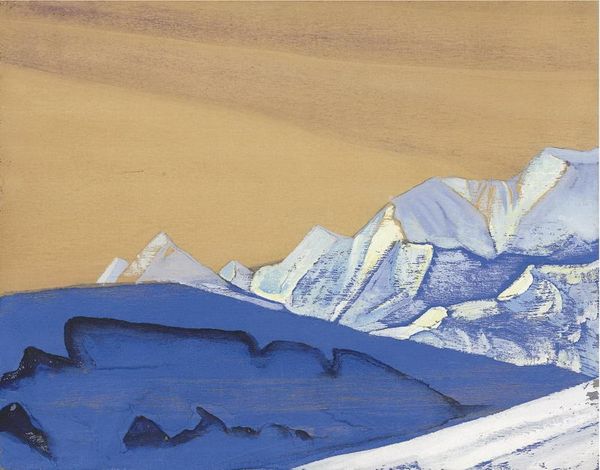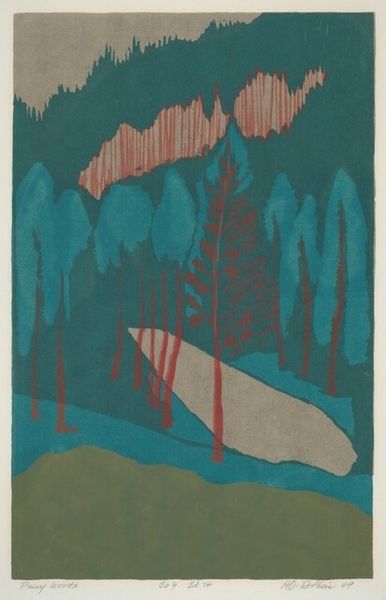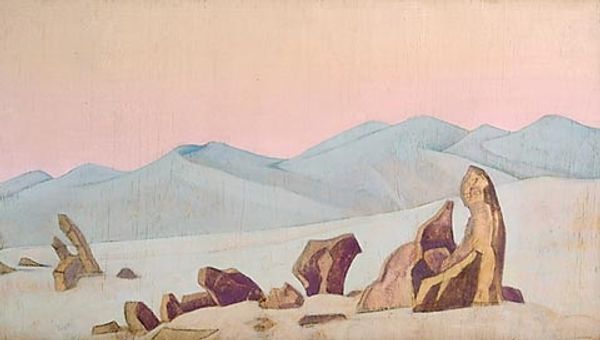
print, woodcut
#
water colours
# print
#
landscape
#
coloured pencil
#
geometric
#
woodcut
#
modernism
#
monochrome
Dimensions: Image: 305 x 407 mm Sheet: 352 x 468 mm
Copyright: National Gallery of Art: CC0 1.0
Curator: So, here we have Louise Arnstein Freedman’s woodcut, "Hidden Quarry in Winter," dating from around 1948. Editor: It's striking. The composition feels almost aggressively geometric. I see angular rock formations, a surprising burst of teal. There is such deliberate carving. What's interesting, beyond the scene depicted, is its texture—that's what grabs me first. Curator: Absolutely. Looking closely at the medium, the distinct marks of the woodcut, really draws attention to the physical labor embedded in its creation, doesn’t it? Consider the choices involved: which areas to carve away, which to leave raised, the very act of applying the colored pencil, then layering them. This isn't just representation; it’s a record of the maker's process. Editor: That's fascinating. And those choices undoubtedly influenced its reception. In the postwar era, woodcut prints, and printmaking more broadly, occupied an intriguing space in American art. Too often disregarded by major art institutions, these techniques were taken up by printmaking collectives that democratized art making, providing new avenues for women artists. The geometric, modernist style may have been the safest means to tackle these new paths in social imagery without raising too much opposition. Curator: Indeed. This reminds us that aesthetic movements and materials intersect with socio-political structures in important ways. Take those stark rock forms, for example. Quarries were significant sites of industrial labor; does this image subtly comment on the changing landscape? The red backdrop is suggestive. Editor: Or even questions the very definition of 'landscape art', if you will, while these raw materials go through constant consumption for urban infrastructure, how does this mirror the natural/manmade interaction. Curator: Precisely! Editor: Looking at "Hidden Quarry," I realize I appreciate it more having considered how material informs meaning. Curator: Yes, examining art through the lens of process really opens up richer understandings. There's such power in understanding not just what we see, but *how* it was made and under what conditions.
Comments
No comments
Be the first to comment and join the conversation on the ultimate creative platform.
